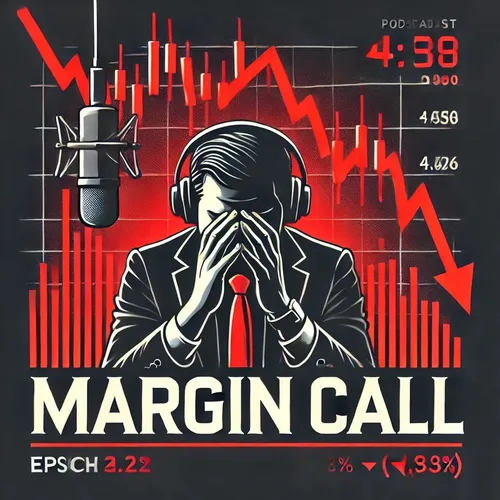Margin calls, short positions, and the high-stakes world of leveraged trading.
- Author
- Quiet. Please
- Published
- Sat 23 Aug 2025
- Episode Link
- https://www.spreaker.com/episode/margin-calls-short-positions-and-the-high-stakes-world-of-leveraged-trading--67487734
Margin calls and short positions are two terms deeply intertwined with the high-stakes, rapid-fire world of leveraged trading. These concepts often come into sharper focus when market volatility drives sudden price movements, shaking up both seasoned traders and new participants alike. Let's delve into what margin calls are, how they connect to short positions, and the unique pressures faced by those holding short positions that suddenly find themselves “in trouble.”
A margin call arises when the value of an investor’s margin account, which contains securities bought with borrowed funds, falls below the broker’s required minimum known as the maintenance margin. This can happen for several reasons. As outlined by guidance from StockGro, the most common triggers include a sharp fall in the value of the trader’s holdings, excessive use of leverage, or unexpected increases in margin requirements set by the broker during periods of heightened volatility. The moment an account’s equity sinks beneath this threshold, brokers issue a margin call, asking the trader to deposit additional funds or liquidate positions to restore balance. If the trader fails to act quickly, the broker will sell off assets—often at unfavorable prices—to cover the shortfall and limit further risk to both parties.
While margin calls can happen to anyone using leverage, they are especially dramatic when it comes to short positions. In a short sale, an investor borrows shares and sells them on the market, hoping to buy them back later at a lower price, return them to the lender, and pocket the difference. This strategy hinges on the asset’s price falling. If the price rises instead, the short seller is on the hook for potentially unlimited losses, as there’s theoretically no cap to how high an asset’s price can go. As losses mount, the margin requirements against the short position rapidly escalate, raising the risk of a margin call.
Short positions become particularly precarious when unexpected news, earnings beats, market squeezes, or sudden investor enthusiasm causes a rapid spike in the stock price. One notable example is the “short squeeze,” where rising prices force short sellers to rush to cover their positions by buying back stock, which in turn drives the price even higher. As UBS Wealth Management points out, prudent risk management is crucial when borrowing to invest or short, since leverage amplifies gains but also magnifies losses. Without careful planning, a margin call can quickly escalate into forced sales at unfavorable prices and significant financial damage.
What happens when a short position is in trouble? In practice, traders holding short positions under threat of a margin call must either deposit more collateral or close part or all their position by buying shares, usually at much higher prices than where they entered. Failing to do so prompts brokers to force-close their positions, often crystallizing heavy losses, as highlighted by analysts at SmartAsset who note that leverage can lead to rapid capital erosion for inexperienced traders. This spiral can trigger cascading effects through the market as forced buying pushes prices even higher, piling on the pressure for other short sellers caught on the wrong side of the trade.
Managing the risks of margin calls and short positions requires constant vigilance. Investors must monitor their positions closely, keep ample cash or liquid assets on hand, and fully understand the risks of leverage. The potential for rapid losses is why both institutional and retail traders are advised by global asset managers like UBS to leave a buffer above minimum margin requirements and to act proactively at the first sign of trouble.
Thank you for tuning in, and remember to subscribe. This has been a Quiet Please production, for more check out quiet please dot ai.
For more
